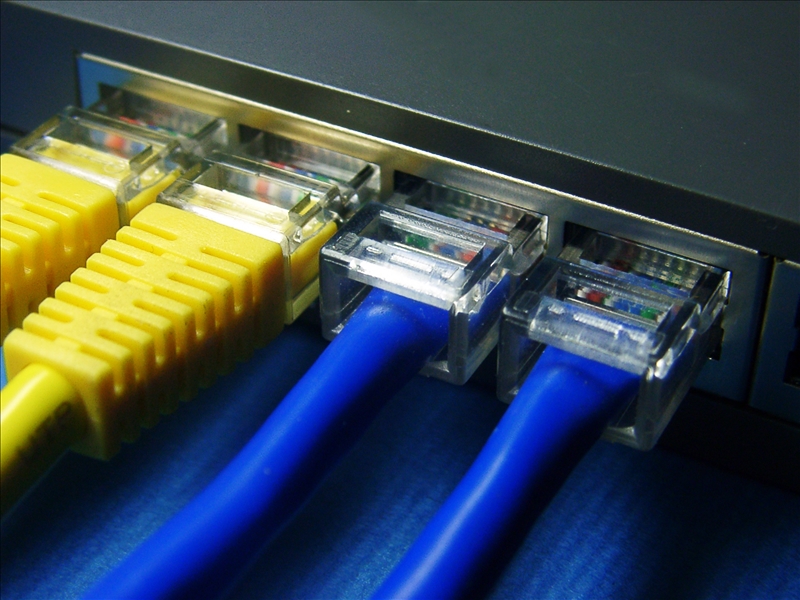
How Improper Cabling Causes Network Issues – Part 1
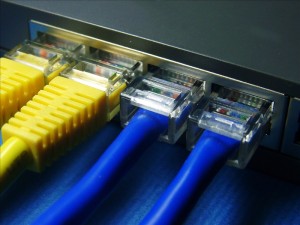 Your employees are dissatisfied by their company’s network performance, and it is affecting their productivity. A number of factors must be taken into consideration. How many users are attempting to use resources simultaneously? Have you taken into account how much the use of devices has grown? Is your network equipment sufficient to meet demand? Answering the above questions will help, but network issues may be directly related to your company’s structured cabling.
Your employees are dissatisfied by their company’s network performance, and it is affecting their productivity. A number of factors must be taken into consideration. How many users are attempting to use resources simultaneously? Have you taken into account how much the use of devices has grown? Is your network equipment sufficient to meet demand? Answering the above questions will help, but network issues may be directly related to your company’s structured cabling.
Outdated Cabling
In many instances, the age of your structured cabling system may be responsible for poor network performance. 15-year-old cabling may have met standards when it was installed, but now it may be unable to handle the ever increasing network traffic needs of your company.
An internet service provider (ISP) provides the cable that provides the connection from your company’s network to the internet. When this backbone component fails to meet today’s bandwidth standards, bottlenecks may occur.
In situations where you are attempting to operate at speeds that are too high or carry excessive bandwidth via a cable that not rated for the capacity, it will be noticeable to users and their productivity will decline, hampering business operations.
Quality of Cabling
Cabling manufacturers rate their cables in terms of capability and performance. For example, CAT6 and CAT6a cabling have different capabilities, CAT being an abbreviation for category. A manufacturer must meet the performance standards set by the Telecommunications Industry Association (TIA) for each category of cabling.
Cabling that exceeds minimum standards will attain higher network speeds without having to upgrade your cabling. In contrast, for cabling that only meets the minimum standards, the company network speed will be unable to expand much beyond the rating of the cable.
It is helpful to understand cable standards and ratings. Even though a cable is labeled Category 6A, it is not automatic that it meets the minimum performance standards of this category. The brand name and manufacturing quality will play a big role in the cable’s output.
Part 2 will discuss Compatibility, Patch Cords, and Poor Installation.
Progressive Office Cabling
Founded in 1986, Progressive Office’s success has been a direct result of years of commitment to seeking solutions on behalf of our clients in the Washington, D.C., Atlanta, Pittsburgh and New York City areas. Efficiently working together, Progressive teams get cabling installed and operating as fast as possible while minimizing disruption and downtime. Call our toll free number (800) 614-4560 today.
;
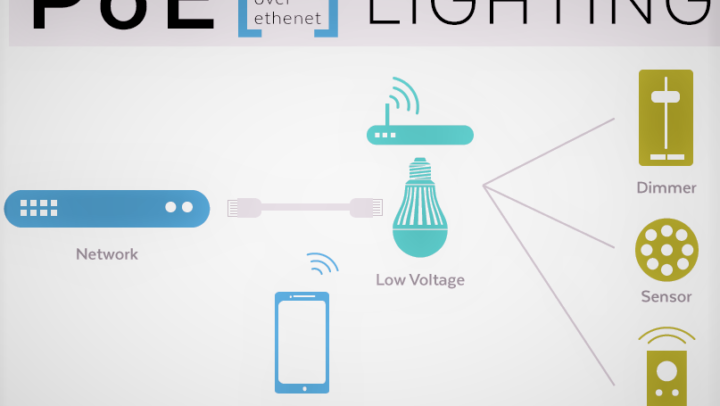
Emerging Data Center Trends for 2018 – Part 2
![]()
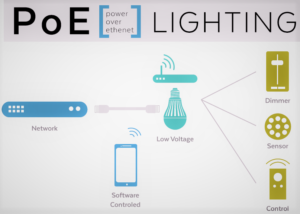 As discussed in Part 1, 2018 is turning into a year with several exciting emerging data cabling trends. Part 2 will discuss Low Voltage Lighting Over POE and Passive Optical Networks. Before starting your company’s data cabling project, consult with an expert and experienced team to get the best results.
As discussed in Part 1, 2018 is turning into a year with several exciting emerging data cabling trends. Part 2 will discuss Low Voltage Lighting Over POE and Passive Optical Networks. Before starting your company’s data cabling project, consult with an expert and experienced team to get the best results.
3) Low Voltage Lighting Over POE
Certain to be used increasingly in the future, low voltage lighting powered by POE (Power Over Ethernet) networks will provide several benefits. Efficient, low voltage lights need less electricity, saving on utility bills and lessening environmental impact.

Ethernet Crossover Cable Basics
 The crossover cable connects two Ethernet network devices to each other. They were invented for temporarily supporting host-to-host networking when a network router or another intermediary device is not available. Although crossover cables appear the same as a standard straight-through (patch) Ethernet cable, their internal wiring structures are different.
The crossover cable connects two Ethernet network devices to each other. They were invented for temporarily supporting host-to-host networking when a network router or another intermediary device is not available. Although crossover cables appear the same as a standard straight-through (patch) Ethernet cable, their internal wiring structures are different.
Straight Through vs. Crossover
A straight-through cable is used for connecting two different kinds of devices, such as a network switch to a computer. In contrast, a crossover cable is for connecting two devices that are identical.
The straight-through cable’s ends can be wired in any manner, but both ends must be identical. This is different from the crossover cable’s internal wiring, which reverses the signals for receiving and transmitting. The first and third wires and the second and sixth wires are crossed.
High-quality Ethernet crossover cables have special markings which allow users to distinguish them from straight-through cables. They are often red in color and the word "crossover" will appear on its casing and packaging.
Crossover Cable Needs
Crossover cables came into use during the 1990s and 2000s because the most common types of Ethernet were unable to support direct cable connections between hosts. Intended for using specific wires for both receiving and transmitting signals, the original and Fast Ethernet standards required the communication of two endpoints through an intermediary device to avoid conflicts.
The Ethernet feature MDI-X has auto-detection for the prevention of signal conflicts, enabling the Ethernet interface to automatically determine and negotiate the expected signaling convention of the device at the other end of the cable. The majority of home broadband routers and Gigabit Ethernet adopted MDI-X.
As a result, crossover cables are only necessary for the connection of two Ethernet client devices if they are not configured for Gigabit Ethernet. Nowadays, Ethernet devices are compatible with crossover cables because they can automatically detect them.
Ethernet Crossover Cables Usage
Crossover cable usage should be limited to direct network connections. When a user tries connecting a computer to an antiquated router or network switch via a crossover cable rather than a standard cable, the link can be prevented from working.
Progressive Office Cabling
Founded in 1986, Progressive Office’s success has been a direct result of years of commitment to seeking solutions on behalf of our clients in the Washington, D.C. and New York City areas. Efficiently working together, Progressive Office teams get cabling installed and operating as fast as possible while minimizing disruption and downtime. Call our toll free number (800) 614-4560 today.
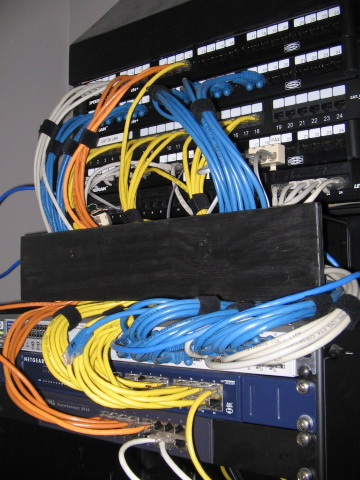
Basics and Benefits of Zone Cabling – Part 3
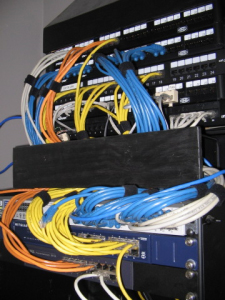 As discussed in Part 2, there are considerable cost savings from the deployment of zone cabling systems. Part 3 will continue discussing the basics and benefits of zone cabling.
As discussed in Part 2, there are considerable cost savings from the deployment of zone cabling systems. Part 3 will continue discussing the basics and benefits of zone cabling.
Additional Zone Cabling Benefits
- Additional IP devices for audio & video, BAS, digital signage, voice, data security, digital signage, WAPs (wireless application protocols), etc. can be integrated easily into the current structured cabling system through ZE (zone enclosure) connections.
- Extra ports within the ZE facilitate fast MACs (moves, adds, and changes) of current service configurations.
- For easing installation and decreasing labor costs, tested trunking and factory pre-terminated cables can be utilized.
- Increased efficiency of pathway utilization will be realized for the entire facility space.
- Structured cabling system deployment will be speedier and cause less disruption.
Smart & Green Building Designs
Perfect for smart and green building designs, zone cabling systems can reduce labor expenses and waste of cabling materials. Centralized connections inside ZEs achieve greater efficiency for the routing of pathways. LEED credits provided by the United States Green Building Council (USGBC) can be maximized. In addition, cable sharing can support several low-speed and low pair count applications functioning on a single 4-pair cabling system. This achieves greater efficiency in cable and pathway utilization.
Summary
Modern workspaces are becoming more social and flexible, and they are increasingly reconfigured and updated with greater frequency.
Zone cabling systems allows flexibility in work spaces, facilitating faster and less disruptive moves, adds, and changes than traditional cabling systems.
Zone cabling allows for greater efficiency in the use of pathways and materials, which is required for smart and green building designs.
CAT 6A shielded cabling is recommended in zone cabling designs to achieve maximum performance.
Shielded CAT 6A zone cabling designs result in greater performance, better support of remote powering applications, and ZE termination flexibility at practically no additional cost in comparison to CAT 6A UTP designs.
Regardless of size, zone cabling installations planned with 25% spare port availability will considerably decrease client disruption and allow the facility owner to recover the expense for extra ports inside two to five years or after achieving the threshold for ROI.
Progressive Office Cabling
Founded in 1986, Progressive Office’s success has been a direct result of years of commitment to seeking solutions on behalf of our clients in the Washington, D.C. and New York City areas. Efficiently working together, Progressive teams get cabling installed and operating as fast as possible while minimizing disruption and downtime. Call our toll free number (800) 614-4560 today.
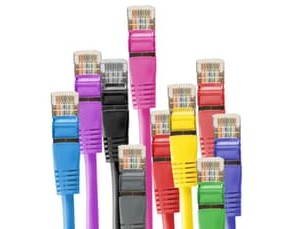
New Standards for Cabling and Category 8 Update
 The selection of proper cabling has become more crucial and also more complicated, but the process can be made easier by knowing about the choices available and updates regarding the development of Category 8 (CAT 8).
The selection of proper cabling has become more crucial and also more complicated, but the process can be made easier by knowing about the choices available and updates regarding the development of Category 8 (CAT 8).
There are several organizations that determine the standards for cabling, such as the ISO (International Organization for Standardization), IEC (International Electrotechnical Commission), TIA (Telecommunications Industry Association), and CENELEC (European Committee for Electrotechnical Standardization). However, our discussion will primarily focus on ISO/IEC and TIA.
As its standard calls for 10Gb/s rates of transmission, 10GBASE-T cabling is the fastest in the market. Unable to support 10Gb/s, Category 5e does not receive 10GBASE-T standard recognition. In addition, advisories by the TIA and ISO/IEC and TIA state that new class E/category 6 cabling should not be installed to support 10GBASE T. As a result, the cabling options for new installations that meet the 10GBASE-T standards for carrying data up to 100 meters are only found in the class EA/CAT 6A, class F/CAT 7, or class FA/CAT 7A.
Regarding data centers that are newly built, ISO, along with other standards organizations, have determined that CAT 6A should be the minimum grade. The task force overseeing IEEE 802.3 40GBASE-T have drafted the baseline objectives for the future 40 Gb/s standard, which is well beyond the capabilities of CAT 6A.
Cabling of a higher category traditionally matches and surpasses the electrical and mechanical standards of what preceded it. In addition, it is backwards compatible. Although TIA calls for cabling systems to perform at CAT 6A minimum, it will not be adopting CAT 7 or 7A as determined by ISO/IEC. TIA is naming its next class of cabling, Category 8, to differentiate it from ISO/IEC standards for CAT 7 and CAT 7A.
Interestingly, the proposed performance for CAT 8 will not be meeting or exceeding CAT 7A standards for up to 1 GHz. For example, regarding parameters for internal crosstalk, CAT 7A is superior to CAT 8 by more than 20 decibels.
Union Network Cabling
When work requires a unionized cabling group, call on Progressive Office Inc. for your commercial Cat5e/6/6a and fiber cabling projects. Specializing in cabling for data, voice, security and even the latest WiFi and LiFi solutions. Phone: (202) 462-4290

Gradual Phase Out of CAT5e Cabling in Office Buildings
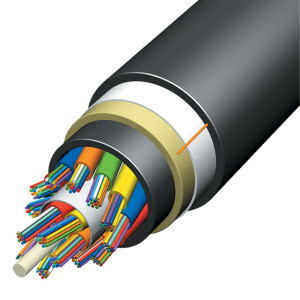 After their Milan working group meeting in 2015 regarding cabling standards, the International Organisation for Standardisation (ISO) and International Electrotechnical Commission (IEC), together known as the ISO/IEC, made the announcement that Category 5e (CAT5e) cabling will be considered obsolete for new installations in commercial and industrial buildings.
After their Milan working group meeting in 2015 regarding cabling standards, the International Organisation for Standardisation (ISO) and International Electrotechnical Commission (IEC), together known as the ISO/IEC, made the announcement that Category 5e (CAT5e) cabling will be considered obsolete for new installations in commercial and industrial buildings.
Setting the first international standard for cabling more than 20 years ago, ISO/IEC continually works on the development, maintenance, and promotion of technology and communications technical standards. A major change for the cabling of office buildings is now being implemented worldwide, raising the minimum horizontal cabling requirement from Class D (CAT5e) to Class E (CAT6), along with recommendations for installing Class EA (CAT6a) or faster cabling. Essentially, this will result in making CAT6 the minimum requirement for installations in new office building installations.
Providing a maximum performance of 100 MHz over computer networks, CAT5e has been utilized in structured cabling for both Ethernet and IP communications. Considered adequate for fast Ethernet and gigabit Ethernet, CAT5e has the additional capability of carry video and telephony signals. The original ISO/IEC 11801 standard now has cabling classes that were added for enabling the support of up to 10 gigabits a second, such as CAT6, CAT6A, CAT7 and CAT7A.
CAT5 is not capable of matching the speed of data that CAT6 or CAT7 cabling can deliver. CAT6 has a maximum performance of 250 MHz, while CAT7 has a maximum performance of 600 MHz, enabling ultra-fast Ethernet. In addition, CAT7 features better durability and a longer service life than either CAT5 or CAT6 cabling.
More than 20 years have passed since ISO/IEC 11801 made its debut as an international standard, and it has led the way for the reliable implementation of data and voice cabling globally. However, CAT5e is now in the process of being phased out. Superior classes of cabling are being installed at new office buildings. Wireless LAN infrastructure is upgrading at a rapid pace, along with its speed, to keep up with the growing number of smartphones, laptops, and tablets. These demands have forced the gradual replacement of CAT5e with newer cabling that will meet current and future user expectations for fast and efficient data capability.
Union Network Cabling
When union work requires a unionized cabling group, contact Union Network Cabling for your commercial Cat5e/6/6a and fiber cabling projects. They specialize and excel in cabling for data, voice, security, and even the latest WiFi and LiFi solutions. Phone: (202) 462-4290
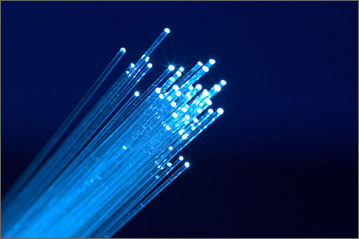
Common Blunders to Avoid
Cable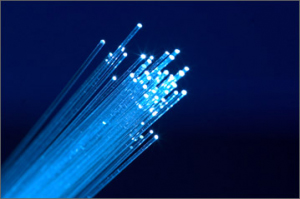 networking has evolved a great deal. It is now mandatory for companies to invest in structured cabling systems that can support a complex operation. That is why many corporations have shifted to fiber optic communications from the traditional copper cabling systems. However, it is important to plan the infrastructure carefully and anticipate some problems that may come along the way.
networking has evolved a great deal. It is now mandatory for companies to invest in structured cabling systems that can support a complex operation. That is why many corporations have shifted to fiber optic communications from the traditional copper cabling systems. However, it is important to plan the infrastructure carefully and anticipate some problems that may come along the way.
Replacement in Stages
Doing everything hastily and simultaneously is a problem.
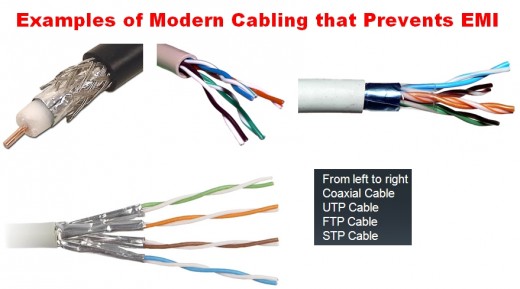
Handling Cat5/Cat5e Cabling
 Information Technology specialists have to choose the kind of cable to utilize for their networks. Cat5 has been one of the main choices for decades. This is because Cat5 supports 10/100 Ethernet which includes Fast Ethernet. In recent years, Cat5e has become the dominant choice for new cabling projects. And Cat5e cable is also backwards compatible. Your computers, phone and other network devices will work on Cat5e cable.
Information Technology specialists have to choose the kind of cable to utilize for their networks. Cat5 has been one of the main choices for decades. This is because Cat5 supports 10/100 Ethernet which includes Fast Ethernet. In recent years, Cat5e has become the dominant choice for new cabling projects. And Cat5e cable is also backwards compatible. Your computers, phone and other network devices will work on Cat5e cable.
One handling issue is the electrical interference

CAT5E/CAT6 Cable Repair & Patching Techniques
 Network cables are said to be the “arteries and veins” of the communications network. The cabled system is a highly consistent platform for setting up infrastructure since the connectivity is very reliable. It is also easy to troubleshoot. However, it is not really fail-safe. Cables can get warped and sometimes snagged in ceilings. The connectors can also get broken if they are pulled to hard at the wallplate.
Network cables are said to be the “arteries and veins” of the communications network. The cabled system is a highly consistent platform for setting up infrastructure since the connectivity is very reliable. It is also easy to troubleshoot. However, it is not really fail-safe. Cables can get warped and sometimes snagged in ceilings. The connectors can also get broken if they are pulled to hard at the wallplate.
It does not matter whether it is Cat5e or Cat6. Cat6 is considered a better choice although, for some, cost prohibitive. When you look at it,

